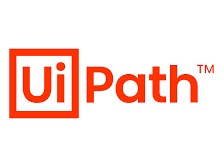What is Java FullStack
Introduction:
Java Full Stack Development is a comprehensive approach to building web applications, combining both front-end and back-end technologies using the Java programming language. This versatile stack allows developers to create robust, scalable, and efficient applications that cater to a wide range of user needs. In this guide, we will explore the key components of Java Full Stack Development and how mastering them can elevate your skills as a developer.
- Front-End Technologies:a. HTML5 and CSS3:
- Understanding the fundamentals of HTML5 and CSS3 is essential for creating well-structured and visually appealing user interfaces.
- Mastery of JavaScript is crucial for creating interactive and dynamic front-end experiences. jQuery, a powerful library, simplifies DOM manipulation and event handling.
- Choosing a modern JavaScript framework like React or Angular helps in building scalable and maintainable user interfaces. These frameworks provide a structured approach to front-end development.
- Back-End Technologies:a. Java and Spring Boot:
- Java, a robust and widely-used programming language, is the backbone of the back-end in Java Full Stack Development. Spring Boot, a popular framework, simplifies the development of Java applications by providing pre-built modules.
- Building RESTful APIs is a key aspect of back-end development. Java, combined with frameworks like Spring MVC, facilitates the creation of scalable APIs that communicate seamlessly with the front end.
- Proficiency in working with databases, such as MySQL, PostgreSQL, or MongoDB, is vital. Java developers should be comfortable with handling database operations and optimizing queries for better performance.
- Middleware:a. Apache Maven:
- Maven is a powerful build tool that simplifies the management of dependencies and project configurations in Java applications.
- Application servers like Apache Tomcat or WildFly are commonly used to deploy and run Java web applications.
- Version Control:a. Git:
- Understanding Git for version control is essential for collaborative development. Platforms like GitHub or GitLab facilitate effective teamwork and code management.
- DevOps:a. Continuous Integration/Continuous Deployment (CI/CD):
- Implementing CI/CD pipelines with tools like Jenkins or GitLab CI ensures efficient and automated testing, building, and deployment of applications.
- Docker and Kubernetes are popular tools for containerization, simplifying the deployment and scaling of Java Full Stack applications.
- Testing:a. JUnit and Selenium:
- JUnit is widely used for unit testing in Java applications, while Selenium is valuable for automated testing of web applications.
- Security:a. Spring Security:
- Integrating Spring Security into your Java Full Stack application ensures robust authentication and authorization mechanisms.
- Continuous Learning:a. Community Involvement:
- Stay connected with the Java community, participate in forums, and contribute to open-source projects to stay abreast of the latest trends and best practices in Java Full Stack Development.
Conclusion: Mastering Java Full Stack Development involves a comprehensive understanding of both front-end and back-end technologies, as well as proficiency in various tools and frameworks. By investing time in learning and hands-on experience, developers can create powerful and scalable applications that meet the demands of modern web development. Keep exploring and honing your skills to stay at the forefront of Java Full Stack Development.


